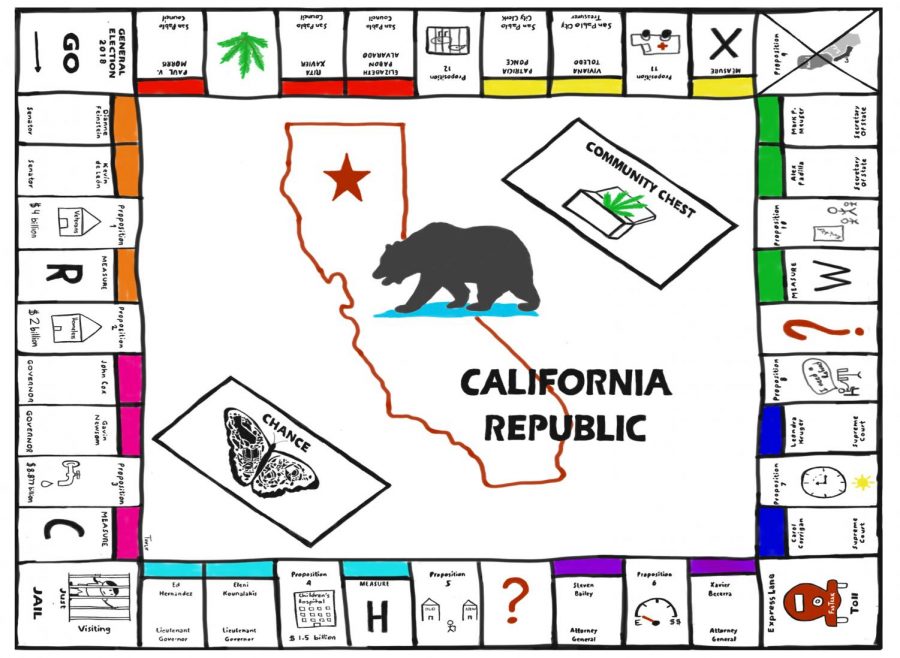Editorial: Voting in midterms is crucial
Oct 24, 2018
The right to participate in the electoral process by voting is a hard-fought American tradition. However, in California, the blue wave that rises on a two-year cycle extends a wave of apathy over the Golden State.
Get out the vote campaigns run rampant across college campuses whenever a Super Tuesday draws near, but despite the hoards of Craigslist canvassers who crowd Campus Center Plazas across the state, voter turnout numbers continue to be lackluster.
California voters casually skip out on election day festivities, even if an “I voted” sticker earns a free regular cup of coffee at Starbucks.
And media saturation of national politics drowns out the issues that most directly affect the people living in the state. Because presidential politics seem paramount, many voters stay home, as the majority of the state’s population leans blue.
However, when so many people remain stagnant and only the most radical of any faction participates, the issues that non-participants care about get underrepresented.
According to the California for Civic Engagement Project, during the 2012 election cycle, less than 50 percent of people age 18-24 were registered to vote.
Sure, many of our friends and co-workers have legitimate reasons why they can’t participate in the election process, but for those that don’t share those reasons, why not vote in candidates who support your interests and the people you care about.
As of May 2018, 19 million of California’s 25.1 million eligible adults were registered to vote according to the Public Policy Institute of California. That is a 2 percent increase from the same polling done in 2014.
The increase is no reason for California’s college-aged students to pat themselves on the back as Californians ages 55 and older make up 32 percent of the state’s adult population, but constitute 48 percent of likely voters.
And this is despite the younger voters having the energy, access to information and ability to distribute information in a varied number of ways.
The older generation of Californians is not only out-thinking their younger counterparts, they are out working their information-spreading efforts and in turn, beating them at the polls as well.
This isn’t just college newspaper hyperbole — the evidence is measured out in the facts.
Research from the institute shows the share of likely voters in each region mirrors the region’s share of the state’s overall adult population.
In the Bay Area, 20 percent of residents are adults and they make up 23 percent of likely voters. Adults in the study are listed as being 35 to 54 years of age. Young adults are listed as age 18 to 34, and make up only 18 percent of likely voters.
There has to be a complete shift in the system for the situation to change. What’s funny, in a sad way, is the easiest way to change the system is through voting, but distractions and an inherited sense of apathy have left this generation without the stomach to try.


